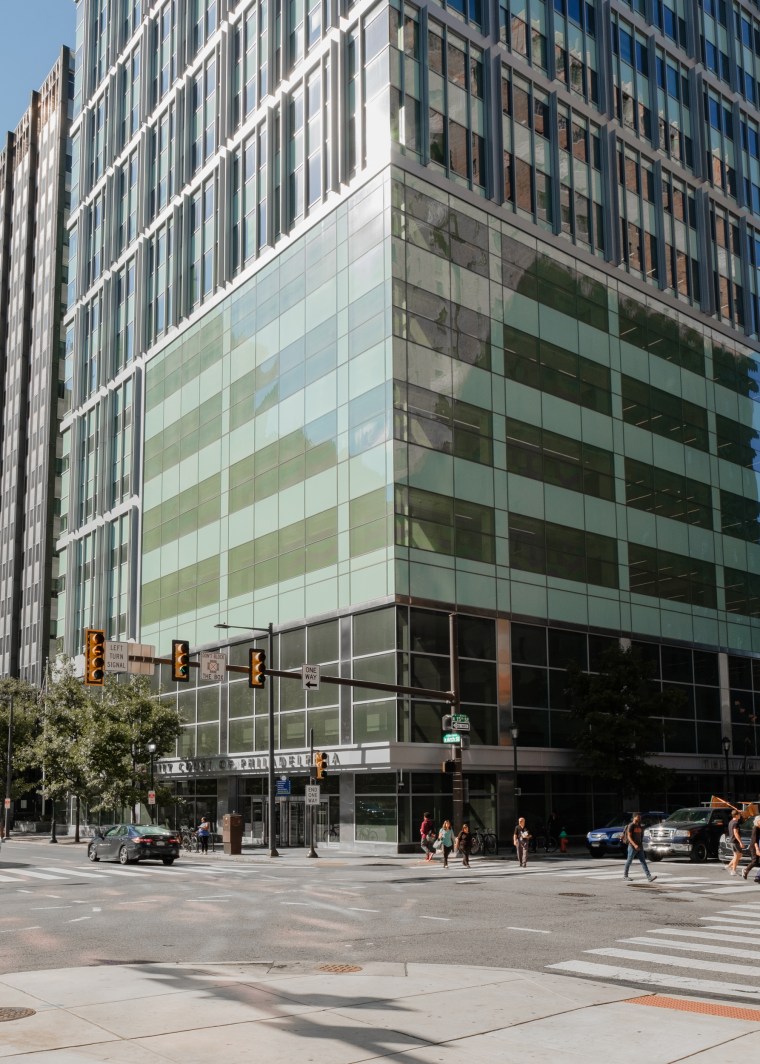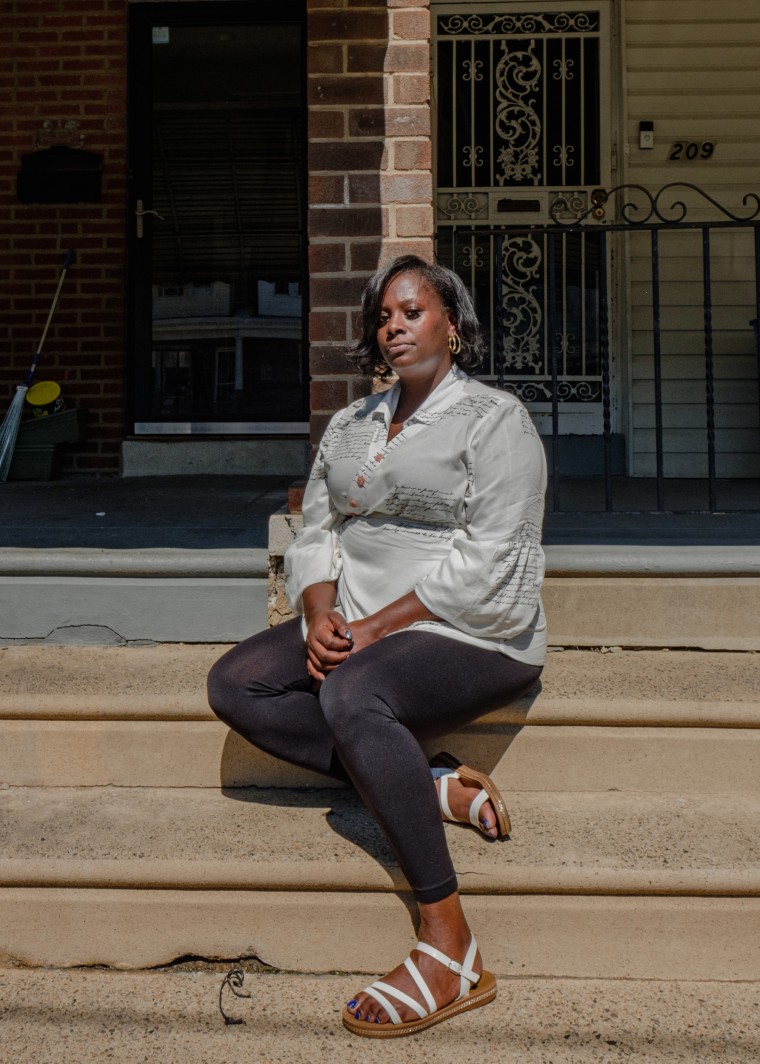This article was published in partnership with ProPublica, a nonprofit newsroom that investigates abuses of power. Sign up to receive ProPublica’s biggest stories as soon as they’re published.
PHILADELPHIA — More than a decade before the Penn State University child sex abuse scandal broke, an assistant football coach told his supervisors that he had seen Jerry Sandusky molesting a young boy in the shower. When this was revealed during Sandusky’s criminal trial in 2012, it prompted public outcry: Why hadn’t anyone reported the abuse sooner?
In response, Pennsylvania lawmakers enacted sweeping reforms to prevent anything like it from ever happening again.
Most notably, they expanded the list of professionals required to report it when they suspect a child might be in danger, broadened the definition for what constitutes abuse and increased the criminal penalties for those who fail to report.
“Today, Pennsylvania says ‘No more’ to child abuse,” then-Gov. Tom Corbett declared as he signed the legislation into law in 2014.
A flood of unfounded reports followed, overwhelming state and local child protection agencies. The vast expansion of the child protection dragnet ensnared tens of thousands of innocent parents, disproportionately affecting families of color living in poverty. While the unintended and costly consequences are clear, there’s no proof that the reforms have prevented the most serious abuse cases, an NBC News and ProPublica investigation found.
Instead, data and child welfare experts suggest the changes may have done the opposite.
The number of Pennsylvania children found to have been abused so severely that they died or were nearly killed has gone up almost every year since — from 96 in 2014 to 194 in 2021, according to state data. State child welfare officials say more vigilance in documenting severe cases of abuse likely contributed to the increase. But child safety advocates and researchers raised concerns that the surge of unfounded reports has overburdened the system, making it harder to identify and protect children who are truly in danger.
In the five years after the reforms took effect, the state’s child abuse hotline was inundated with more than 1 million reports of child maltreatment, state data shows. More than 800,000 of these calls were related not to abuse or serious neglect, but to lower-level neglect allegations often stemming from poverty, most of which were later dismissed as invalid by caseworkers.
The number of children reported as possible victims of abuse or serious neglect increased by 72% compared to the five years prior, triggering Child Protective Services investigations into the well-being of nearly 200,000 children from 2015 to 2019, according to a ProPublica and NBC News analysis of federal Department of Health and Human Services data. From this pool of reports, child welfare workers identified 6,000 more children who might have been harmed than in the five previous years. But for the vast majority of the 200,000 alleged victims — roughly 9 in 10 — county agencies dismissed the allegations as unfounded after inspecting families’ homes and subjecting parents and children to questioning.
The expanded reporting requirements were even less effective at detecting additional cases of sexual abuse. Some 42,000 children were investigated as possible sex abuse victims from 2015 to 2019 — an increase of 42% from the five years prior — but there was no increase in the number of substantiated allegations, the analysis of federal data showed. In other words, reforms enacted in response to a major sex abuse scandal led to thousands more investigations, but no increase in the number of children identified as likely victims.
Child welfare experts say these findings cast doubt on the effectiveness of the primary tool that states rely on to protect children: mandatory child abuse reporting. These policies, the bedrock of America’s child welfare system, were first implemented more than half a century ago in response to growing national awareness of child maltreatment. The thinking was simple: By making it a crime for certain professionals to withhold information about suspected abuse, the government could prevent vulnerable children from falling through the cracks.
Over the past decade, at least 36 states have enacted laws to expand the list of professionals required by law to report suspicions of child abuse or imposed new reporting requirements and penalties for failing to report, according to data compiled by the National Conference of State Legislatures, a group representing state governments.
Some legal experts and child welfare reform activists argue these laws have created a vast family surveillance apparatus, turning educators, health care workers, therapists and social services providers into the eyes and ears of a system that has the power to take children from their parents.
“I don’t think we have evidence that mandated reporting makes children safer,” said Kathleen Creamer, an attorney with Community Legal Services, a Philadelphia nonprofit that provides free representation to parents accused of abuse and neglect. “I actually think we have strong evidence that it puts child safety at risk because it makes parents afraid to seek help, and because it floods hotlines with frivolous calls, making it harder for caseworkers to identify families who really do need services.”
In a yearlong investigation, ProPublica and NBC News are examining the extraordinary reach of America’s child welfare system and its disproportionate impact on the lives of low-income families of color. The stream of reports generated by mandatory reporting is so vast, and so unevenly applied, public health and social work researchers estimate that more than half of all Black children nationally will have been the subject of a child protective services investigation by the time they turn 18 — nearly double the rate of white children.
After a hotline report comes in, it’s the job of child welfare investigators to determine whether a child is truly in danger. These caseworkers aren’t held to the same legal or training standards as law enforcement, but they can wield significant power, ProPublica and NBC News found, sometimes pressuring their way into homes without court orders to comb through closets and pantries, looking for signs of what’s lacking.
Under this system, child welfare agencies investigate the families of 3.5 million children each year and take about 250,000 kids into protective custody, according to federal data. Fewer than 1 in 5 of these family separations are related to allegations of physical or sexual abuse, the original impetus behind mandatory reporting. Instead, the vast majority of removals are based on reports of child neglect, a broad range of allegations often tied to inadequate housing or a parent’s drug addiction.
In response, a growing movement of family lawyers, researchers and child welfare reform advocates have called for a radical change in the approach to child protection in America, starting with the abolition of mandatory reporting. This idea has grown in popularity among both progressive activists and conservatives who oppose what they call excessive government intrusion in the lives of families. Other critics support less dramatic reforms, such as limiting which professionals are required to report and providing better training for mandated reporters.

The fallout from Pennsylvania’s expansion of mandatory reporting has become something of a cautionary tale among those calling for a system overhaul. Even some proponents of the changes have begun to question their impact.
State Rep. Todd Stephens, a Republican who helped spearhead the post-Sandusky reforms, said the impact of the changes warranted closer examination. In response to NBC News and ProPublica’s findings, he said he would lead a legislative effort to take a “deep dive in the data” to ensure the laws are protecting children as intended.
But Stephens said he believes the legislation is working, citing the massive increase in hotline reports and the 6,000 additional children with substantiated findings of abuse or serious neglect over five years.
“The goal was, if people thought children were in trouble or in danger, we wanted the cavalry to come running,” Stephens said. “That’s 6,000 kids who are getting help who might not have otherwise.”
Child welfare experts, however, cautioned against drawing conclusions based on the increase in substantiated abuse cases because those are subjective determinations made by caseworkers that children were more likely than not to be at risk of being abused and do not indicate whether the findings were ultimately dismissed by a judge.
Dr. Rachel Berger, a professor of pediatrics at the University of Pittsburgh who served on a task force that paved the way for the 2014 reforms, said the state has not produced evidence to show the changes have made children safer.
In 2020, while testifying before the Pennsylvania House of Representatives, Berger warned lawmakers that the reforms “may have inadvertently made children less safe” by straining the system and siphoning resources away from genuine cases of abuse.
“We are continuing to tell mandated reporters, ‘Report, report, report,’ and nobody can handle it,” Berger said in an interview.
Jon Rubin, deputy secretary at the Pennsylvania Department of Human Services’ Office of Children, Youth and Families, which oversees the state’s ChildLine call center, said it’s “really hard to evaluate” whether the 2014 reforms succeeded in making children safer overall. Rubin said he’s aware of the concern that the changes overwhelmed the system and may have contributed to the increase in child abuse deaths. But he cautioned against drawing conclusions without considering other factors, such as the strain on the system caused by the fentanyl epidemic beginning in 2017.
Rubin said his agency is studying ways to reduce the number of hotline reports related to poverty and housing issues, in part by encouraging mandatory reporters to instead connect families directly with resources. The state has also made it a priority to keep struggling families together by providing access to services such as mental health counseling and parental support groups, Rubin said. He worries about the potential impact of more dramatic changes.
“How many children’s lives are we willing to risk to, as you said, abolish the system, to reduce the overreporting risk?” Rubin said. Would preventing unnecessary reports, he asked, be worth “one more child hurt or killed, five more children hurt or killed, 100 more children hurt or killed?”
But Richard Wexler, the executive director of the National Coalition for Child Protection Reform, a Virginia-based advocacy group, said that this logic ignores the harm that comes with unnecessary government intrusion in the lives of innocent families. Simply having an investigation opened can be traumatic, experts say, and numerous studies show that separating young children from their parents leads to increased risk of depression, developmental delays, attachment issues and post-traumatic stress disorder.
It isn’t necessary to threaten educators, social workers, doctors and other professionals with criminal charges in order to protect children, Wexler argued.
“Abolishing mandatory reporting does not mean abolishing reporting,” he said. “Anybody can still call ChildLine. What it does, however, is put the decision back in the hands of professionals to exercise their judgment concerning when to pick up the phone.”
The cost of seeking help
April Lee, a Black mother of three in Philadelphia, said she has seen and experienced firsthand the way mandatory reporting and the prospect of child removals create a culture of fear in low-income communities.
In Philadelphia, the state’s most populous city, Black children were the focus of about 66% of reports to the city’s Department of Human Services, its child welfare agency, even though they make up about 42% of the child population, according to a 2020 report commissioned by the department.

Over time, Lee said, moms in neighborhoods like hers get used to having child welfare agents show up on their steps.
“It’s a shame,” she said. “You get to the point where it’s almost normalized that you’re going to have that knock on your door.”
Lee estimates that she’s personally had about 20 such reports filed against her in the two decades since she gave birth to her first child at the age of 15. In most instances, she said, the caseworkers didn’t leave her with paperwork, but she said the accusations ranged from inadequate housing to concerns over her son’s scraped knee after a tumble on the front porch.
The agency never discloses who files the reports, but Lee believes it was a call from a mandatory reporter that triggered the investigation that resulted in her children being taken away. In 2013, a year after the birth of her third child, Lee said, she was drugged at a bar and raped. In her struggle to cope with the trauma, she said, she confided in a doctor.
“I was honest,” Lee said. “Like ‘I’m f—ing struggling. I’m struggling emotionally.’”
She suspects someone at the clinic where she sought mental health care made the hotline call, most likely, she said, believing that the city’s child welfare agency would be able to help.
The agency opened an investigation and determined that Lee — who at one point had left her three children with a friend for several days — was not adequately caring for her children. The agency took them into protective custody, according to court records reviewed by NBC News and ProPublica. Afterward, Lee said, she spiraled into drug addiction and homelessness.
At her lowest point, Lee slept on a piece of cardboard in the Kensington neighborhood, the epicenter of Philadelphia’s opioid crisis. It took two years to get clean, she said, and another three before she regained custody of all of her children.
Lee said people like to tell her she’s proof that the system works, but she disagrees.
“My children still have deficits to this day due to that separation,” she said. “I still have deficits to this day due to that separation. I still hold my breath at certain door knocks. That separation anxiety is still alive and well in my family.”
Source: | This article originally belongs to Nbcnews.com










